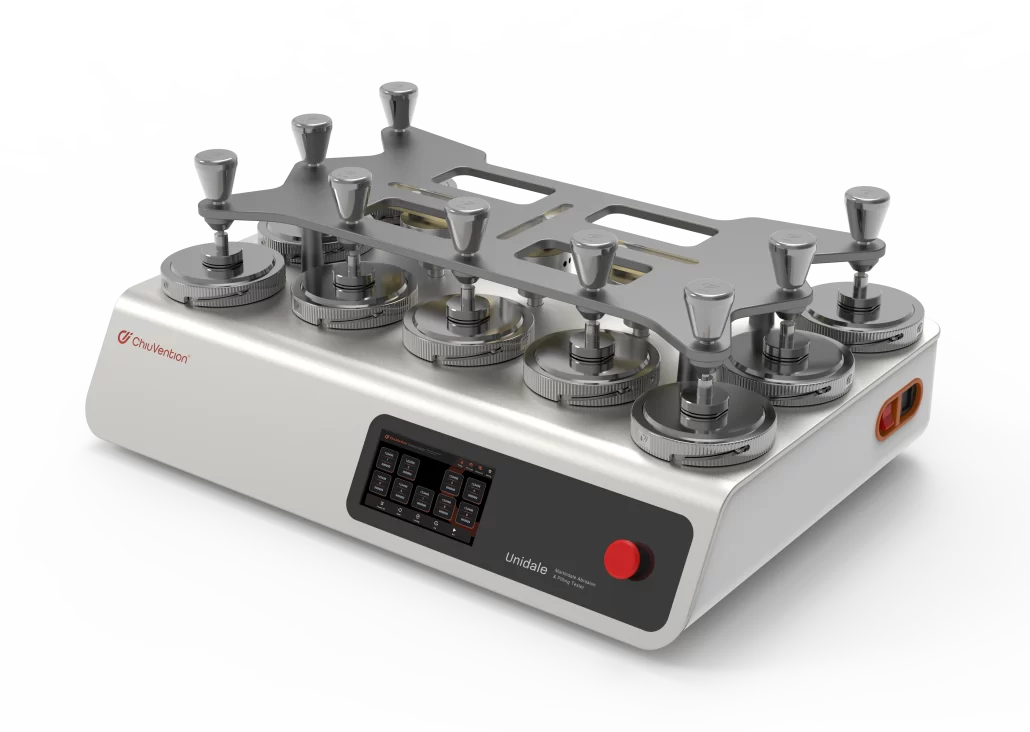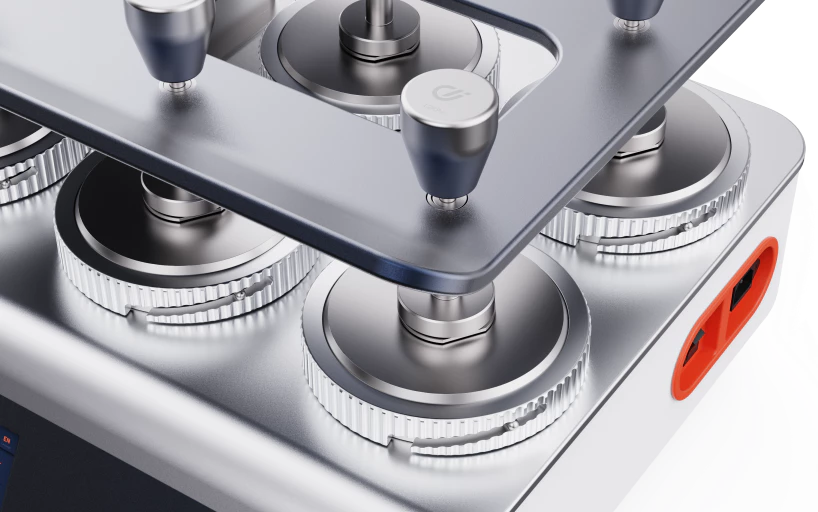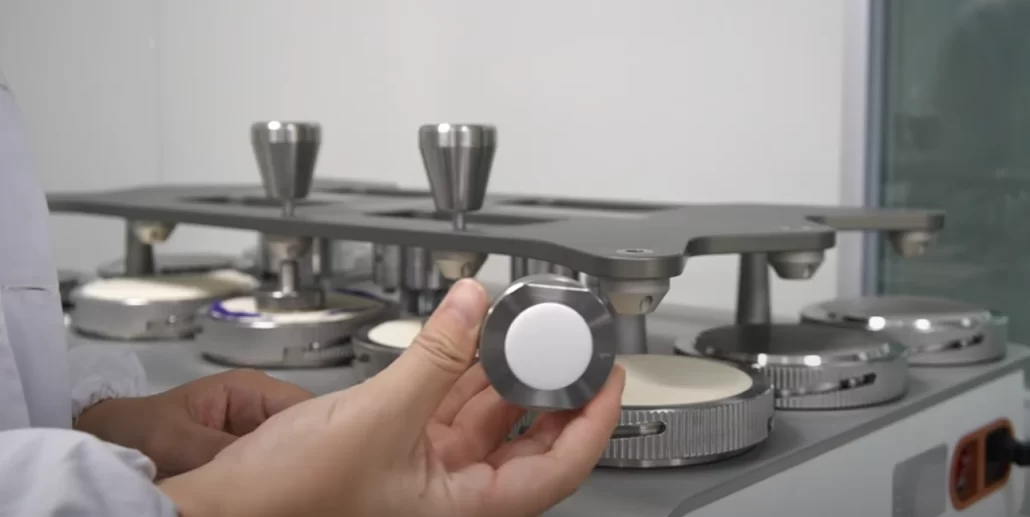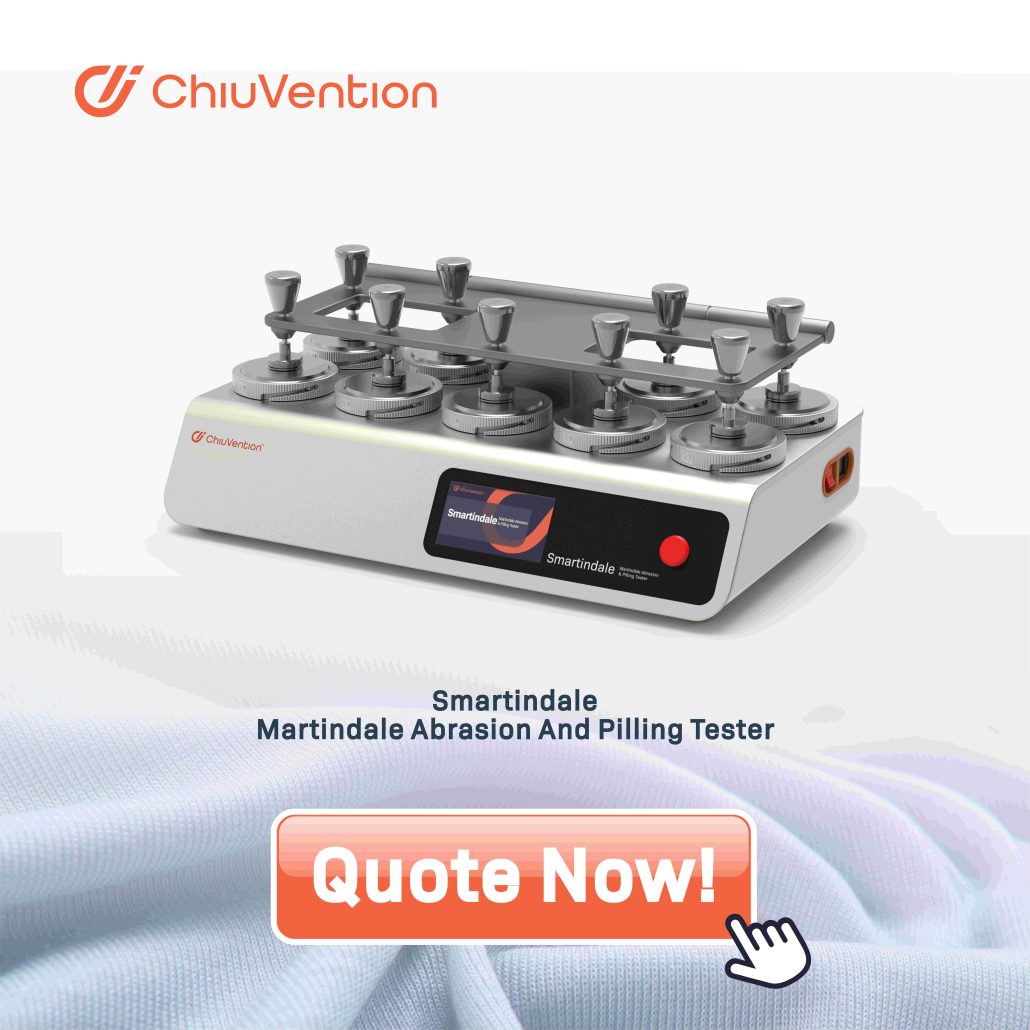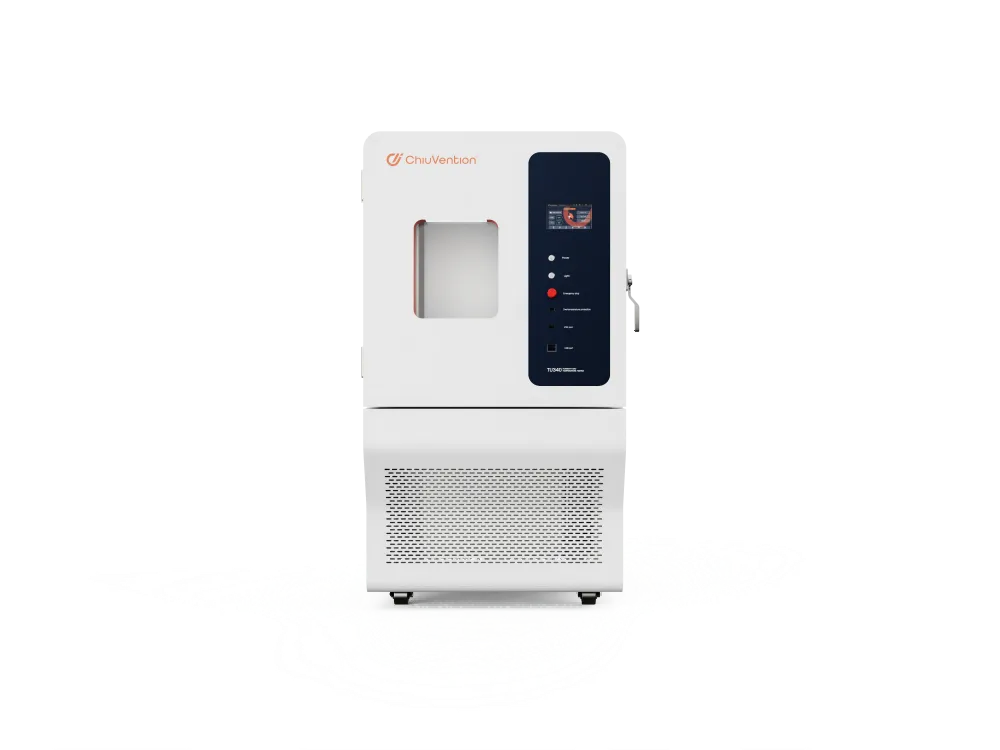Introduction
In the textile industry, maintaining the quality and durability of fabrics is crucial. One essential aspect of fabric quality is its resistance to pilling, which refers to the formation of small balls of fiber on the fabric surface. The Martindale Abrasion and Pilling Teste is a widely used instrument for determining the resistance to pilling and other surface changes of fabrics. This method, suitable for all kinds of fabrics but especially effective for woven products, ensures that textiles meet the necessary standards for durability and longevity.
1.1 This method is used to determine the resistance to pilling and other related surface changes of the fabric, using the Martindale Pilling Tester. This method is normally applicable to all kinds of fabrics, and is especially suitable for testing woven products.
Note 1: For other test methods for pilling resistance testing of textiles, please refer to D3511/D3511M, D3512/D3512M, and D3514.
1.2 This method is not suitable for the thickness of more than 3mm (0.125in.) of fabric, because more than this thickness of fabric can not be mounted on the test clamp.
1.3 The specimen can be washed or dry cleaned before the test.
1.4 This standard uses international units and imperial units as the standard unit, the two units expressed in the value should be treated independently of each other, each unit system expressed in the value may not be equal to the other, so each unit system must be independent of the other, and should not be confused.
1.5 This test standard does not assume any guarantee of safety in the use of the standard. It is the responsibility of the user of this standard to determine appropriate safety guidelines and health practices prior to use.
16 This standard conforms to the generally accepted principles of international standard setting in the Principles, Norms and Guidance for International Standard Setting issued by the Committee on Technical Barriers to Trade (TBT).
Reference Documents
2.1ASTM Standard
ASTM D123 Textile-specific terms
ASTM D3511/D3511M Test method for pilling resistance of textile fabrics and other related surface markings: Brushing pilling method
ASTM D3512/D3512M Test method for pilling resistance of textile fabrics and other related surface markings: Messy flip pilling method
ASTM D3514 fabric pilling resistance and other surface changes of the test method: elastic liner method
ASTM D4850 fabric-specific terminology
ASTM D7018 special terminology for glass fibers and their products
2.2 ASTM Additional Notes:
ADJD3512 5 sets of standard sample photos of messy pilling
Terminology
3.1 All terms related to ASTM D13.59 “Fabric Test Methods” refer to ASTM D4850 and ASTM D7018
3.1.1, the following terms related to this standard: loop (loop), pile, martindale pilling test, pilling resistance, pilling test method, fabric pilling test.
3.2 Other terminology refer to ASTM D123.
Test method overview
4.1 This martindale abrasion test method is mainly used in the laboratory test equipment to simulate the actual wearing fabric surface pilling and some other such as pilling and other surface changes in the situation. The fabric is clamped to the Martindale tester, and the specimen mounted on the abrasive table and the same specimen mounted on the specimen clamp are rubbed against each other under a certain pressure with a certain geometry. The pilling and other surface changes produced by the rubbing of the specimen are compared with the standard visual sample photo for rating.
Meaning and use
5.1 Acceptance test – This Martindale pilling test is not recommended as an acceptance test. If used as an acceptance test, caution should be exercised because data from inter-laboratory testing is not available. Although some test methods are not recommended as acceptance tests, in some cases buyers and sellers have to choose a method to test the material. Although the pilling resistance test method is not recommended as an acceptance test, the test method is still practical because it is widely used outside the United States.
5.2 When there is a difference in the results of the test experiments between the buyer and the seller using this method, if there is a statistical bias, a sample should be randomly selected from the test sample for testing and the statistical bias should be determined by comparing the results of both tests. It is recommended to use statistical aids to study the bias. Both parties should select as many similar materials as possible as a set of samples from at least the species where the discrepancy occurs. The samples are then randomly assigned in equal numbers to both laboratories. Test results between the two laboratories should be compared with statistical tests for unpaired data using predetermined probability levels. If deviations are found, either the cause of the deviation is identified and corrected, or the deviation is taken into account in future tests of this material.
5.3 Fabric pilling is a very complex physical property that varies by many factors, including fiber type, fiber specification, yarn and fabric structure, fabric finishing and other factors. And the fabric in the actual wear of the pilling performance may be more by the external environment and the influence of different wearers.
5.4 Finishing and the surface changes of the fabric itself will largely affect its pilling performance. Therefore, it is generally recommended that fabrics be washed in water or dry cleaned or both before testing.
5.5 The pilling and appearance changes of the fabric will vary with the pile on the surface of the fabric and the color contrast, when only the number of pilling to assess the pilling of the fabric, these influencing factors are not taken into account. The pilling process of the fabric is usually accompanied by some other surface changes, such as pile removal, color change, pilling, etc. General fabric evaluation is carried out simultaneously by pilling and other factors affecting surface properties, so we suggest that the overall evaluation of the fabric should not consider the pilling performance alone, but other relevant factors should also be considered.
5.6 The pilling grade of the specimen is obtained by comparing the tested specimen with the corresponding visual standard, which can be the actual fabric or a sample of the fabric. The grade rating is 5 to 1 (no pilling to very serious pilling)
5.7 This test method is applicable to pilling performance of different kinds of woven fabrics and knitted fabrics, pilling performance of various fabrics depends mainly on the fiber, yarn and fabric structure differences and finishing different. This method is not applicable to the testing of non-woven fabrics.
Martindale Test Equipment and Test Materials
6.1 Martindale Pilling Tester Machine (see Figure 1). In accordance with the term D4850 using a 60mm Lee Sa Ru curve, and has a 38mm sample holder.
Note 2: Farm equipment and accessories are available for commercial purchase.
6.2 Standard Felt: Fabric weight 750±50g/m² (22±1.5oz/yd²), thickness 3±0.3mm (0.12±0.01in.)
6.3 Polyurethane foam-thickness 0.12±0.04in (3±0.01mm), density 1.94bf/ft³ (29-31kg/m³), hardness 38.23-47.22lbf (170-210N).
Note 3:Instruments and accessories are available for commercial purchase.
6.4 Fabric rating equipment (rating box): Illumination equipment (using cool white fluorescent lamps) that allows simultaneous observation of test specimens and standard rating sample photographs, see Table 1 for equipment and visual rating options.
Table 1: Observation equipment and selection
| Equipment | Specimen preparation |
| ASTM rating box (see Figure 2) | 0.78rad (45°) |
| Rating Box | 0.78rad (45°) |
| Rating Box | Level |
| Rating Box | Critical angle |
| At the choice of the buyer and seller | |
Figure 1 Martindale Pilling Tester
6.5 Standard Pilling Cloth: A fabric with known pilling level, used to check the stability of the instrument. For the time being, there is no global standard pilling cloth, the laboratory provides its own standard cloth according to the equipment.
6.6 Rating criteria.
6.6.1 Standard rating specimens, a series of known grades of test specimens based on a specific fabric category, the standard rating specimens should be stored and handled in a standard atmospheric environment to maintain their initial condition. Rating is recommended to use cardboard frame fixed standard rating specimens.
6.6.2 A set of 1 to 5 rating specimens, approximately 105 mm (4.13 in.) wide, shall be rated on a scale of 1 to 5, from “very severe pilling” to “no pilling” for the degree of pilling.
6.6.3 Digital rating system
6.7 Sampler: 38mm (1.5in.) and 140mm (5.5in.) in diameter.
6.8 Washing equipment (if required).
6.9 Dry cleaning equipment (if required).
Martindale abrasion tester for sale NOW! Clicking this picture below to get our quick quote.
Sampling
7.1 Basic Sampling Unit – Consider the number of rolls of fabric or the fabric’s production parts as the basic sampling unit.
7.2 Laboratory sampling unit – Take a full-width fabric of 1 meter (1 yard) in length on the basic sampling unit, discarding 1 meter (1 yard) at the beginning of the sampling. If the fabric with a circular tissue structure then go to a full tissue structure as a sample.
Test samples: selection, quantity and preparation
8.1 Unless otherwise specified, test samples are to be washed or dry-cleaned prior to sampling, depending on the end use of the fabric or the agreement of the parties to determine the method of conditioning the sample.
8.2 Four pairs of circular specimens, each consisting of a 140 mm (5.5 in) diameter specimen and a 38 mm (1.5 in) diameter specimen, are to be taken from each laboratory sample.
8.3 Sampling should follow the principles of: uniform sampling along the width of the sample, if the sample is a garment, it is necessary to take samples on both sides of the garment; each sample does not contain the same warp and weft yarn: sampling to avoid wrinkling or deformation of the part: except for special instructions, sampling shall start at a position more than 1/10 from the edge of the entire cloth.
Equipment preparation
9.1 Equipment maintenance check: Perform appropriate maintenance checks in accordance with the Martindale Machine’s operation manual.
Moisture conditioning
10.1 The specimen should be humidified at least 4 hours under the standard atmospheric environment of 21±1℃ (70±2℉) and 65±2% RH for textile product testing before testing.
Environmental test chamber
Test procedures
11.1 All test procedures are to be completed under the standard atmospheric conditions for textile testing.
11.2 A 140 mm (5.5 in.) diameter piece of felt and a 140 mm test specimen are placed on each abrasive table in turn, with the specimen facing outward (see Figure 1). A 38 mm (1.5 in.) diameter, 3 mm thick polyurethane foam and a piece of the same size specimen are placed in sequence on the specimen holder, again with the specimen facing outward.
11.3 Place the specimen holder on the corresponding grinding table, insert the mandrel into the specimen holder, and apply a pressure of approximately 3 KPa (0.44 psi) to the test specimen on the grinding table. Each holding device applies the same pressure to the specimen and does not have any other additional pressure.
11.4 Start the instrument with a preset number of runs of 100 revolutions. After completing the preset number of revolutions, the specimen is rated after each set number of revolutions and the final number of stages is recorded according to the instructions in Section 12 of this document by increasing the number of revolutions by 100 to 1000 as indicated in the specimen specifications or as required by the contract.
Martindale Pilling Test Result Evaluation
Place the 38 mm (1.5 in) test specimen in the grading box using double-sided tape.
12.1.1 Using the grading box and the equipment and options in Table 1, the specimens are subjectively graded using standard fabrics or photographs and graded as follows.
Note:
For pilling.
5– No pilling
4– Slight pilling
3– Moderate pilling
2–Severe pilling
1 – very severe pilling
12.1.1.1 When the test sample is between standards, record a half grade (e.g., 3.5 or 2.5)
Note 4: For arbitration testing, use of the equipment and options in Table 1 requires at least 2 raters and consistent testing criteria for valid results.
12.1.2 Use the appropriate rating criteria as agreed upon by the buyer and seller.
12.1.3 Calculate the average of the rating results for each specimen and the average of the lot.
Fabric Pilling Test Reporting
13.1 The test method used for reporting is ASTM D 4970, which describes the specimen characteristics and reports the sampling method.
13.2 Report the following information.
13.2.1 Report the rating grade of each specimen separately, along with the average grade of the four specimens and the average grade of the lot.
13.2.2 If the specimens were washed before testing, report the wash conditions.
13.2.3 If the specimen is dry-cleaned before the test, report the dry-cleaning condition.
13.2.4 Report the number of runs.
13.2.5 Report the type of rating box, the observation method and the rating standard used.
Accuracy and deviation on Martindale Pilling Resistance Test
14.1 Accuracy – Two specimens are rated by two raters two days apart
Specimen 1
| Day 1 | Day 2 | ||
| Rater 1 | Rater 2 | Rater 1 | Rater 2 |
| 4.0 | 4.0 | 3.5 | 4.0 |
| 3.5 | 4.5 | 4.0 | 4.0 |
| 4.0 | 4.0 | 4.0 | 4.5 |
| 4.0 | 4.5 | 4.0 | 4.5 |
| 4.0 | 4.5 | 4.0 | 4.5 |
Specimen 2
| Day 1 | Day 2 | ||
| Rater 1 | Rater 2 | Rater 1 | Rater 2 |
| 3.0 | 3.0 | 3.0 | 3.0 |
| 3.5 | 3.5 | 3.0 | 3.0 |
| 3.0 | 3.0 | 3.0 | 3.5 |
| 3.0 | 3.5 | 4.5 | 3.5 |
| 3.0 | 3.0 | 4.0 | 3.5 |
The reproducibility of the test method is being determined and will be feasible soon.
14.2 The martindale pilling resistance test of a fabric or garment is predicated on a given test method, and there is no bias in this test method for this given premise.
Conclusion
The Martindale Pilling Tester is an invaluable tool for assessing the pilling resistance of fabrics, providing a standardized method that can be universally applied across various textile products. By adhering to the ASTM standards and utilizing the Martindale tester, manufacturers can ensure their fabrics maintain high quality and durability. This rigorous testing method not only helps in quality control but also in meeting the expectations of consumers for long-lasting and resilient textile products.
